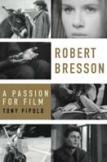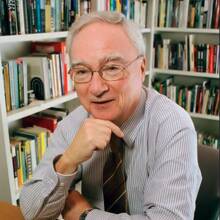Parables of Redemption
Devotees of Robert Bresson (1901-99) base his claim to the title of the pre-eminent Catholic filmmaker on very different grounds than do those who argue the case for Federico Fellini (1920-93). During his Catholic period, which coincided with the peak of his popularity, the Italian master flooded his screen with exuberant, audience-pleasing images, many of them borrowed from Italian iconography. While he worked out his parables of redemption, he entertained with beautiful actors, lush set decoration, comic irony and a bouncy musical score.
Bresson would have none of that. He shows no mercy to his audience. In his slender filmography—he directed only 13 films in a 40-year span—he dealt with explicitly religious figures in “Les Anges du Péché” (1943), “Diary of a Country Priest” (1951) and “The Trial of Joan of Arc” (1962). But he would also grapple with the mystery of grace on city streets, “Pickpocket” (1959), or in a prison cell, “Un Condamné à Mort S’est échappé” (1956), or even in a variety of farmyards with a long-suffering donkey, “Au Hasard Balthazar” (1966). His central figure can be diabolically corrupt, “Les Dames des Bois de Boulogne” (1945), or an innocent forced by circumstance into evil ways, “L’argent” (1983), or being simply victimized by the world, “Mouchette” (1967). Life can be unfair, and often is. Redemption remains uncertain, even to the end, as Christian hope continually confronts the realities of a harsh, unsympathetic universe. Can one accept one’s lot with humility and trust during these games in God’s playground?
Bresson’s directorial style allows no escape from these brute realities. The critic and screenwriter Paul Schrader aptly characterizes his work as a cinema of “sparse means.” Bresson pares away all that is not absolutely necessary for revealing the inner lives of his men and women. He avoids professional actors, who would naturally conceive of their work as “performance.” Instead he uses what he characterizes as “models” to embody his characters, and then lets the lens capture their essence without emotional dialogue or ostentatious camera movement. He avoids any technique that calls attention to itself or to him as creator of the artifice. Lacking “entertainment” value and demanding patient, contemplative viewing, Bresson’s films have never appealed to mass audiences. They do, however, captivate cinematically astute connoisseurs, some of whom would rank him not only among the greatest religious filmmakers alongside Dreyer and Bergman but in the very top echelon of directors in any category.
Tony Pipolo certainly stands among those connoisseurs passionately devoted to the works of the master. An emeritus professor of film and literature at the City University of New York and a practicing psychoanalyst, he has spent 40 years with his subject. His familiarity with the works is breathtaking. He constructs a meticulous commentary for each film in chronological order, citing individual shots and cuts that illustrate Bresson’s mastery of his art. With an austerity that matches his subject matter, the critic pares away extraneous material and focuses directly on the films themselves. He alludes to literary sources and contemporary critics, as the 30 pages of notes clearly indicate, but his primary interest remains a tight shot-by-shot, scene-by-scene analysis of the films themselves.
Clearly intended for experienced film scholars and dedicated Bresson aficionados, this work will prove challenging for even relatively sophisticated moviegoers. As one who has been involved with film criticism for a number of years, I’ve developed a fairly good visual memory, but clearly not good enough to meet the author’s assumptions. The scenes he reconstructs in detail have faded into the past, and I am left trying to imagine what the actual shot might look like and whether it can support the meaning he extracts from it. The 96 stills included help, but only to a point. To follow the author’s analysis profitably, one would really have had to have seen the films quite recently, perhaps with multiple viewings, and even then have a DVD at hand to test his interpretations against one’s own perceptions. Reading through these commentaries could be compared to attending a high-powered seminar without having done the readings under discussion.
Professor Pipolo has provided the definitive academic study of the films of Robert Bresson to date, but it will scarcely broaden his appeal to the film-going public. Why should it? This was not the author’s intention. Future scholars will undoubtedly use this text as their point of departure for further research. In this respect, the book fulfills its purpose admirably.
This article also appeared in print, under the headline “Parables of Redemption,” in the May 10, 2010, issue.








